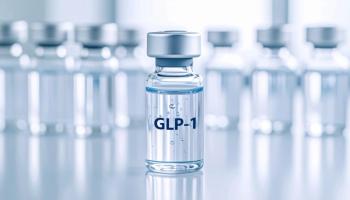
Study Probes Value of Hepatitis C Treatment at All Stages of Liver Fibrosis
Early treatment found to be cost-effective compared with waiting until liver fibrosis worsens.
Treating hepatitis C sooner rather than later -- even at the early stages of liver fibrosis -- is worth the thousands of dollars it costs to pay for the new, more effective drugs, according to researchers who developed a model to assess historical treatment data.
The study out of the University of California, San Francisco, involved a decision-ayalytic model to assess the cost effectiveness of treating all patients with hepatitis C virus versus only patients with advanced fibrosis. Results were published Nov. 23 in the Online First section of JAMA Internal Medicine.
Hepatitis C is a bloodborne virus that can seriously damage the liver over time and lead to cirrhosis of the liver, cancer or the need for a liver transplant. Health officials estimate that about 3 million people in the United States and 150 million worldwide are chronically infected with the disease.
While new drugs to treat the virus have high cure rates, a full course of treatment for one patient in the United States can cost $80,000 or more, which has prompted many insurers to only cover the cost of treatment in later stages of the disease, note the authors.
Their analysis showed that advanced liver disease can be averted by early treatment of patients with hepatitis C, while also increasing the number of healthy life years for patients, according to study author Harinder Chahal, an assistant adjunct professor in the UCSF Department of Clinical Pharmacy.
“This makes treating patients early cost-effective compared to waiting until they have higher degree of liver fibrosis or cirrhosis (as many insurers currently require),” Chahal explained in an e-mail. He added that current prices of treatment with new drugs keep early treatment “out of reach” for many patients.
The study model encompassed treatment at five stages or severity of fibrosis, a scarring of the liver which is a precursor to cirrhosis. Researchers compared the cost of antiviral treatment at all five stages, zero to four, to that of treatment at later stages three and four.
The results showed that it would cost about $53 billion at current drug prices over a five-year period to treat 50% of people in the United States who are chronically infected with hepatitis C and have not been treated for it, regardless of what stage of fibrosis. Waiting to treat 50% of patients who were at 3-or-4-stage fibrosis dropped the estimated cost to $30 billion.
The researchers maintain that earlier treatment would avoid extra costs down the line to treat sicker patients who have greater liver damage from long-term infection. They estimate that about $3 billion in lifetime health care could be saved by treating patients at all stages, instead of just stages 3 and 4.
Since most people who have chronic infection of the disease have likely not been tested and therefor don’t know their status, researchers highlighted how much it would cost to treat half the eligible patients, but their study also looked at treatments at other percentages of the population.
Newsletter
Stay informed on drug updates, treatment guidelines, and pharmacy practice trends—subscribe to Pharmacy Times for weekly clinical insights.

















































































































































































































